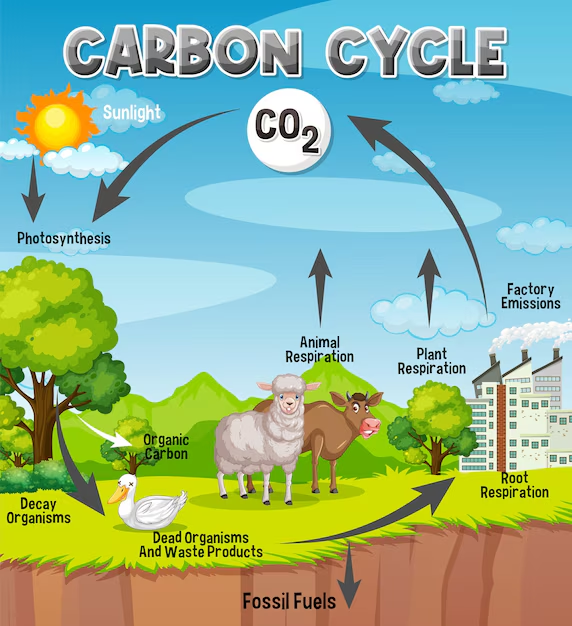
As the effects of climate change become increasingly evident across the globe, the need for innovative and effective solutions to mitigate these changes has never been more critical. One such solution is the removal of carbon dioxide (CO₂) from the atmosphere. This blog post delves into the urgent need for atmospheric CO₂ removal, explores various methodologies, and discusses the implications of these technologies for our future.
Understanding the Carbon Dioxide Problem
Carbon dioxide is a greenhouse gas that contributes significantly to the greenhouse effect, which is the warming of the Earth’s surface due to the trapping of heat by greenhouse gases in the atmosphere. The burning of fossil fuels, deforestation, and other human activities have led to a substantial increase in atmospheric CO₂ levels since the Industrial Revolution. As of now, the concentration of CO₂ in the atmosphere has reached unprecedented levels, exacerbating global warming and climate change.
The Science Behind Climate Change
Climate change refers to long-term changes in temperature, precipitation, and other atmospheric conditions on Earth. While natural processes can cause climate fluctuations, the rapid increase in global temperatures observed in recent decades is primarily due to human activities. The Intergovernmental Panel on Climate Change (IPCC) has consistently highlighted that to prevent catastrophic climate impacts, it is essential to limit global warming to 1.5°C above pre-industrial levels. This requires not only reducing emissions but also actively removing CO₂ from the atmosphere [1].
Why Removing Carbon Dioxide is Essential

- Mitigating Climate Change: Atmospheric CO₂ removal is critical for achieving net-zero emissions, which is the balance between the amount of greenhouse gas emissions produced and the amount removed from the atmosphere. This balance is necessary to stabilize global temperatures and prevent severe climate impacts.
- Reversing Environmental Damage: High levels of CO₂ contribute to ocean acidification, harming marine ecosystems. Removing CO₂ can help reverse these effects and protect biodiversity.
- Complementing Emission Reductions: While reducing emissions is vital, certain sectors, such as aviation and heavy industry, are challenging to decarbonize completely. CO₂ removal can offset residual emissions from these sectors [2].
Methods of Carbon Dioxide Removal
Several technologies and methodologies have been proposed and developed to remove CO₂ from the atmosphere. Here, we discuss some of the most promising approaches.
1. Direct Air Capture (DAC)
Direct Air Capture involves using chemical processes to capture CO₂ directly from the ambient air. The captured CO₂ can then be stored underground or used in various industrial processes. DAC technologies are advantageous because they can be deployed anywhere and do not rely on biomass. However, they are currently expensive and energy-intensive, necessitating further research and development to enhance efficiency and reduce costs.
2. Bioenergy with Carbon Capture and Storage (BECCS)
BECCS combines biomass energy production with carbon capture and storage. Plants absorb CO₂ as they grow, and when the biomass is used for energy, the CO₂ emitted is captured and stored underground. This process can result in negative emissions, meaning more CO₂ is removed from the atmosphere than is emitted. BECCS has the potential to generate energy while simultaneously removing CO₂, but it requires careful management of land use to avoid negative impacts on food security and biodiversity.
3. Afforestation and Reforestation
Afforestation (planting new forests on lands that have not been forested) and reforestation (replanting forests on lands that were previously forested) are natural methods of CO₂ removal. Trees act as carbon sinks, absorbing CO₂ through photosynthesis. These methods are relatively low-cost and provide additional environmental benefits, such as habitat restoration and soil conservation. However, they require large land areas and long-term maintenance to be effective [2].
4. Enhanced Weathering
Enhanced weathering involves spreading finely ground silicate rocks, such as olivine, on land or in the ocean. These rocks chemically react with CO₂ in the atmosphere, forming stable carbonate minerals that sequester CO₂ for thousands of years. This method has the potential for large-scale CO₂ removal but requires extensive mining and distribution of minerals, which can have environmental and economic impacts.
5. Ocean-Based Carbon Removal
The oceans naturally absorb a significant portion of atmospheric CO₂. Enhancing this natural process can be achieved through methods such as ocean fertilization, which involves adding nutrients to stimulate the growth of phytoplankton that absorb CO₂. Another approach is the direct injection of CO₂ into deep ocean waters. These methods can sequester large amounts of CO₂, but they also pose risks to marine ecosystems and require careful management to avoid unintended consequences [2].
6. BioChar
Biochar is a stable, carbon-rich form of charcoal that is produced by heating organic material (biomass) in the absence of oxygen (pyrolysis). When added to soil, biochar can improve soil health and increase agricultural productivity while sequestering carbon for hundreds to thousands of years. This method leverages waste biomass, making it a sustainable option for CO₂ removal
7. Carbonated Materials
Carbonated materials involve the use of CO₂ to create stable minerals such as calcium carbonate. This can be done through processes like mineral carbonation, where CO₂ reacts with naturally occurring minerals to form stable carbonates. These materials can be used in construction and other industries, providing a durable way to store CO₂.
Challenges and Considerations
While CO₂ removal technologies offer promising solutions, several challenges and considerations must be addressed:
- Scalability: Many CO₂ removal methods are still in the early stages of development and need to be scaled up significantly to have a meaningful impact on global CO₂ levels.
- Cost: The high cost of current CO₂ removal technologies is a significant barrier to widespread adoption. Investment in research and development is essential to reduce costs and improve efficiency.
- Energy Requirements: Some CO₂ removal methods, particularly DAC, require substantial amounts of energy. Ensuring that this energy comes from renewable sources is crucial to avoid offsetting the benefits of CO₂ removal.
- Environmental Impact: The environmental impacts of large-scale deployment of CO₂ removal technologies must be carefully considered and managed. This includes potential impacts on land use, water resources, and biodiversity.
- Governance and Policy: Effective governance and policy frameworks are necessary to support the development and deployment of CO₂ removal technologies. This includes setting clear targets, providing financial incentives, and ensuring robust monitoring and verification systems.
The Path Forward
To effectively combat climate change, a multifaceted approach is required. This includes reducing emissions, enhancing natural carbon sinks, and deploying a suite of CO₂ removal technologies. Policymakers, researchers, and industry stakeholders must work together to create an enabling environment for the development and implementation of these technologies. Public awareness and support are also crucial to drive action and investment in CO₂ removal efforts.
Conclusion
The need for carbon dioxide removal from the atmosphere is undeniable. As we continue to experience the impacts of climate change, the importance of developing and deploying effective CO₂ removal technologies becomes increasingly clear. By investing in research, fostering innovation, and implementing supportive policies, we can pave the way for a sustainable future where atmospheric CO₂ levels are managed effectively, and the impacts of climate change are mitigated.
Leave a Reply